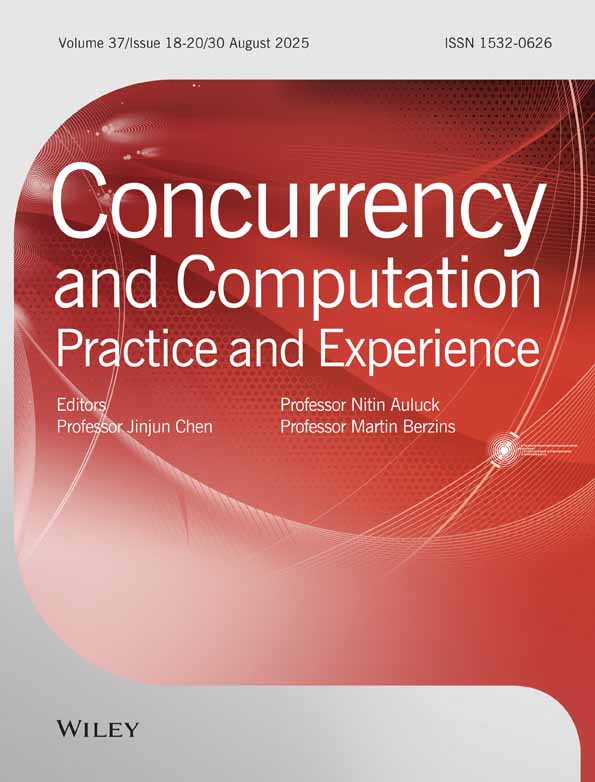Special Issue: Middleware for Grid Computing
1. BACKGROUND
We are pleased to present a special issue of best papers presented at the 4th International Workshop on Middleware for Grid Computing (MGC 2006), which was held in conjunction with the ACM/IFIP/USENIX 7th International Middleware Conference during November 2006 in Melbourne, Australia.
The goal of the fourth edition of the MGC workshop was to bring together researches in the field of middleware, addressing large-scale and real-world problems in grid environments, including Grid and Web Services Architectures and Middleware, Object Metadata and Schemas in Grid Middleware, Programming Models and Tools in Grid Middleware, Resource Management and Scheduling, Strategies and Protocols for QoS in Grid Middleware, Information Services in Grid Middleware, Dependability and Fault Tolerance in Grid Middleware, Performance Evaluation and Modeling in Grid Middleware, Agent-based Approaches in Grid Middleware, Utility Computing, Core Grid Infrastructure, Grid Security, Virtualization in Grid Middleware, Wireless Grids Middleware, Data Grid Middleware, Peer to Peer Protocols in Grid Computing, Network Support for Grid Computing, Grid Application Frameworks, Portals, Portlet Containers, Adaptive-Autonomic Middleware, and Messaging in Grid Middleware.
The MGC 2006 workshop received 42 papers from researchers all over the world. Each paper was peer reviewed by three program committee members and external reviewers. Based on their recommendations, we accepted 14 highly rated papers as regular papers. All accepted papers were presented at the workshop in Australia.
2. SPECIAL ISSUE PAPERS
During the review of workshop papers, Program Committee members were requested to nominate top papers for possible consideration for a journal special issue. From highly rated papers, we selected the top six papers for a special issue and invited authors to submit a substantially extended version of their papers for possible consideration to this special issue. These extended papers went through a rigorous peer review process of the journal managed through the CCPE manuscript management system. Each extended paper was reviewed by external referees. Based on these review comments, we selected five papers for inclusion in this special issue. The selected papers broadly cover key research issues in grid computing middleware as summarized below.
Zhang and Honeyman 1 consider that sharing data in global scientific collaborations demands a large-scale storage system that is reliable and efficient, yet at the same time convenient to use. To meet these requirements, this paper presents a network file system (NFSv4) that supports mutable replication with strong consistency guarantees. Experimental evaluation shows that the system holds great promise for accessing and sharing data in grid computing, delivering superior performance, even for write-intensive applications and widely dispersed storage servers, while rigorously adhering to conventional file system semantics.
Chadwick et al. 2 present access control in Grid Services, describing a novel approach to making access control decisions in grids throughout time and space. While conventional policy decision points (PDPs) such as Sun's eXtensible Access Control Markup Language (XACML) PDP can do neither, and history-based PDPs can only make temporal access control decisions, the work of Chadwick et al. is one of the first attempts to provide a mechanism for distributed and temporal access control decision-making. It does this by storing the ‘retained access control decision information’ (a concept from ISO 10181-3) in a grid-enabled SQL database, which is available to each PDP in the grid. Obligations in each PDP's policy require this information to be updated when access is granted. In this way, each PDP has available to it a history of the previous access control decisions throughout the entire grid.
Bittencourt and Madeira 3 present a dynamic adaptive approach to schedule-dependent tasks onto a grid based on the Xavantes grid middleware. With the concept of rounds, which takes turns sending tasks to execution and evaluating the performance of the resources, the proposed algorithm mixes dynamic scheduling and rescheduling with adaptive behaviour when making scheduling decisions. The algorithm uses an accumulated history of performances to resize the rounds on each resource independently. Bringing together rescheduling and adaptation, the paper opens research topics on more dynamic algorithms, which can bring performance prediction closer to dependent task execution on grids with shared resources.
Amar et al. 4 argue that, among existing grid middleware approaches, one simple, powerful, and flexible approach consists of using servers available in different administrative domains through the classic-server model using the remote procedure call (RPC) protocol. Clients submit computation requests to a scheduler whose goal is to find a server available on the grid using several performance metrics. The aim of this paper is to give an overview of the DIET middleware developed in the GRAAL team and to describe recent developments around plug-in schedulers, workflow management, and tools. DIET is a hierarchical set of components used for the development of applications based on computational servers on the grid.
Chu et al. 5 present KidneyGrid as a service-oriented Grid environment that provides experimental scientists and analysts access to computational simulations and knowledge databases hosted in separate laboratories around the world involved in human and animal kidney research. It provides a software infrastructure (e.g. Gridbus Grid Service Broker and Web-services-based access to remote kidney models) that can be used for collaborative and shared access to grid resources. The innovation is developed within a specialist community of renal scientists, but will be transferable to any other field of research.
Acknowledgements
We would like to thank the authors for contributing papers on their research in middleware for grid computing to this special publication, and thank all the reviewers for providing constructive reviews and in helping to shape this special issue. Finally, we would like to thank Prof. Geoffrey Fox for providing us an opportunity to bring this special issue. Previous issues can be found at 6-12.




